Who said it was impossible to make 100% rice bread without any starches or xanthan gum? This rice flour bread is soft, bendable, airy, and very light! The crust is not hard at all, the bread is very easy to slice. It is dairy-free, paleo, low-oxalate, nightshade-free, and low-salicylate as well!
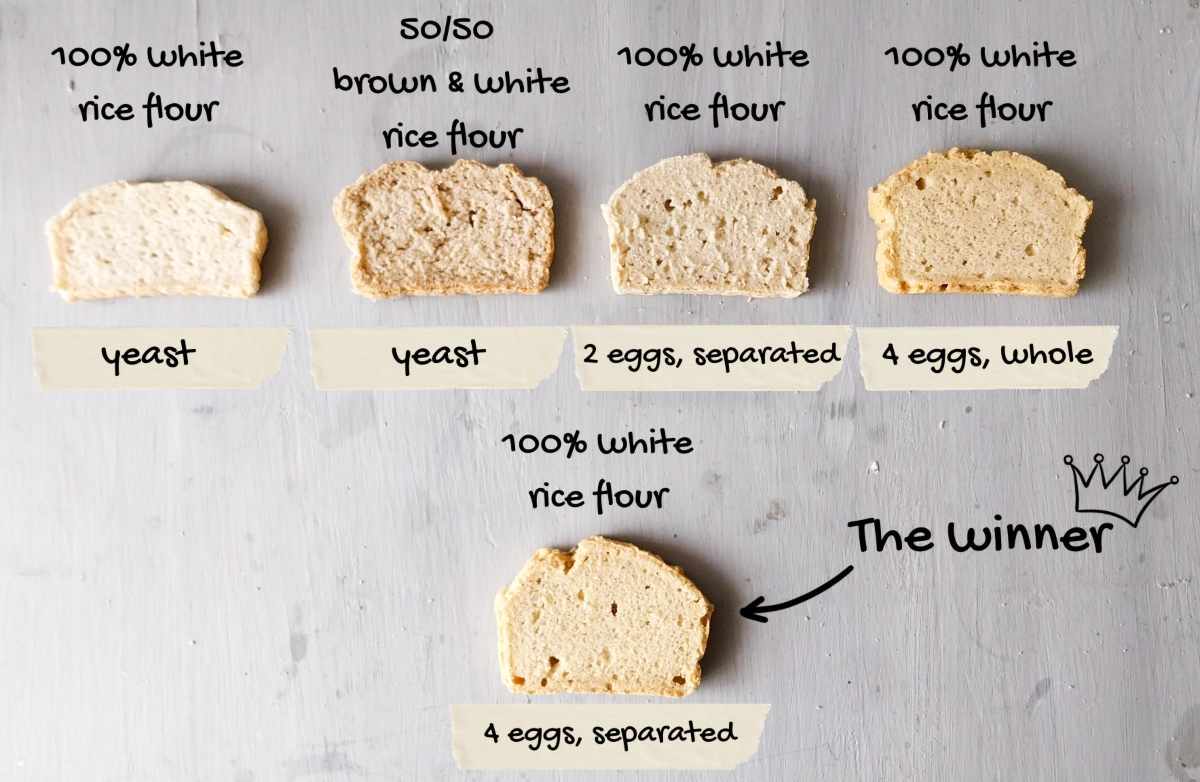
I've tested this bread again and again until I discovered the best texture and flavor combination. Yeast doesn't raise rice flour very well and even when combined with brown rice flour it still had a dense and gummy texture after baking. Since I'm not using whole wheat flour, I needed to come up with a different solution than yeast.
So, I tried the "quick bread" method and it worked so much better! Quick breads rely on eggs and baking powder (or soda) as leavening and raising agents (like this banana bread) so there is no need to rest, proof, or ferment this bread, all you need to do is mix and bake!
Jump to:
🍚Ingredients
I made sure this recipe is really easy to make, so I've included only the necessary ingredients. No butter, no coconut or olive oil, no gums, and no yeast!
- Rice flour - I used white rice flour although you can swap part of it for brown rice flour for a nuttier flavor.
- Psyllium husk - I recommend using whole psyllium husk vs. powder. Psyllium powder needs longer hydration time and it might give your bread a purple tint! Plus, it often clumps in water.
- Eggs - eggs keep your bread fluffy, spongy, airy, and moist without making it gummy!
- Baking powder - use fresh baking powder and make sure it is gluten-free (if you have gluten intolerance). You can use baking soda in which case add 1 tablespoon of apple cider vinegar (soda needs acids to activate).
- Sea salt - for the best flavor and nutrition.
See the recipe card for quantities.
Substitutions
- Rice flour - you can use brown rice flour to make the bread whole-grain (might be harder to digest). If you are looking to reduce carbs, then I'd recommend you make this low-carb almond flour bread instead.
More single-flour recipes:
If you want to use a store-bought gluten-free flour blend, I'd recommend you look for a bread recipe designed to be used with it.
- Psyllium husk - while psyllium husk alternatives exist, I don't recommend substituting it in bread recipes. However, you can try using flax or chia seeds if you have to (I haven't tried this recipe with any psyllium subs).
- Eggs - I don't recommend using any egg substitutes for this recipe as it relies on the eggs heavily (although whipped aquafaba might be an option). if you are looking to make vegan bread, I'd recommend you try a recipe that uses both flour and starches. You can make this Dutch oven loaf, this chickpea boule, or my millet sandwich bread instead.
Can I make rice flour at home?
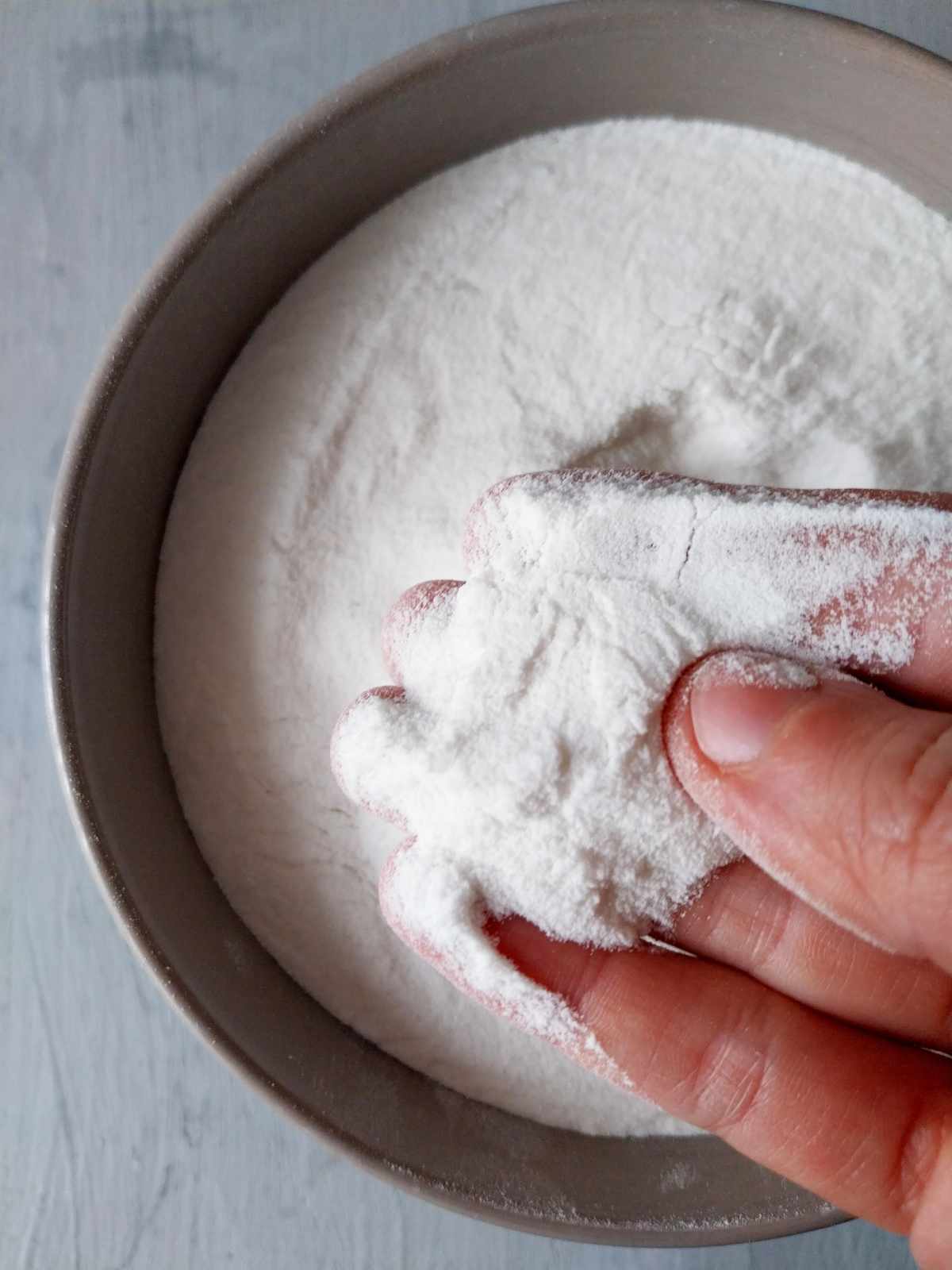
Yes, you can! There are two methods to homemade rice flour. One is with a high-speed blender (like Vitamix or Blendtec) and another one can be made with a regular blender or food processor.
A better option is to get Japanese short-grain rice instead of a long-grain type. If you can, try buying organic white rice because it tends to be lower in arsenic which is toxic in large amounts.
High-powered blender method:
- Place 1 cup of uncooked rice into the blending bowl and lock the lid securely.
- Start blending on high speed until the rice turns into fine flour.
- Store in an air-tight jar or bag for up to 1 year. You can freeze the flour to make it last longer.
Regular blender/food processor method:
- Soak the rice in water overnight.
- Drain the water and let the rice dry completely.
- Blend the rice in a blender or a food processor until it turns into fine flour.
- Store in a glass jar or an air-tight container.
Pro tip: make sure the rice is completely dry before blending unless you will use it right away.
🍞Step-by-step instructions
Don't be intimidated by the amount of steps you see here! The recipe is straightforward and simple. It might take you longer the first time, but it will get easier once you get the process down!
Step 1

Start preheating the oven to 350F/175C (don't use the fan setting).
Add psyllium husk and water to a medium-sized bowl and whisk vigorously to prevent lumps. Set aside.
Step 2
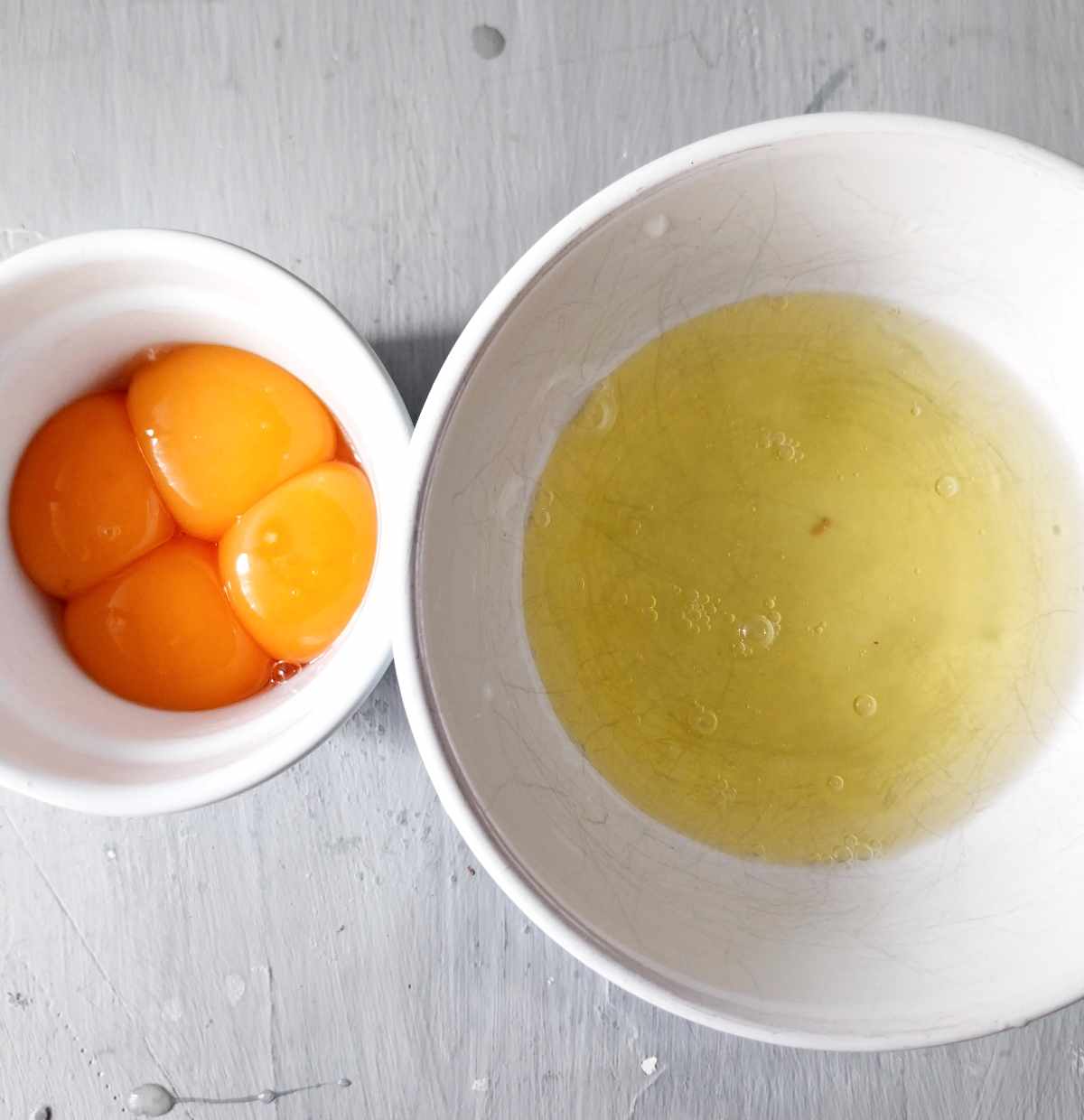
Separate the egg yolks and whites. You can simply use your hands and let the egg whites slip through your fingers into the bowl. Place the yolks in a separate bowl.
Make sure that none of the yolks get into the whites because the fat will inhibit egg whites from whipping into stiff peaks.
I recommend separating one egg at a time using a separate bowl and adding the whites one by one to the larger bowl because you never know when a yolk will break and contaminate the egg whites.
Step 3
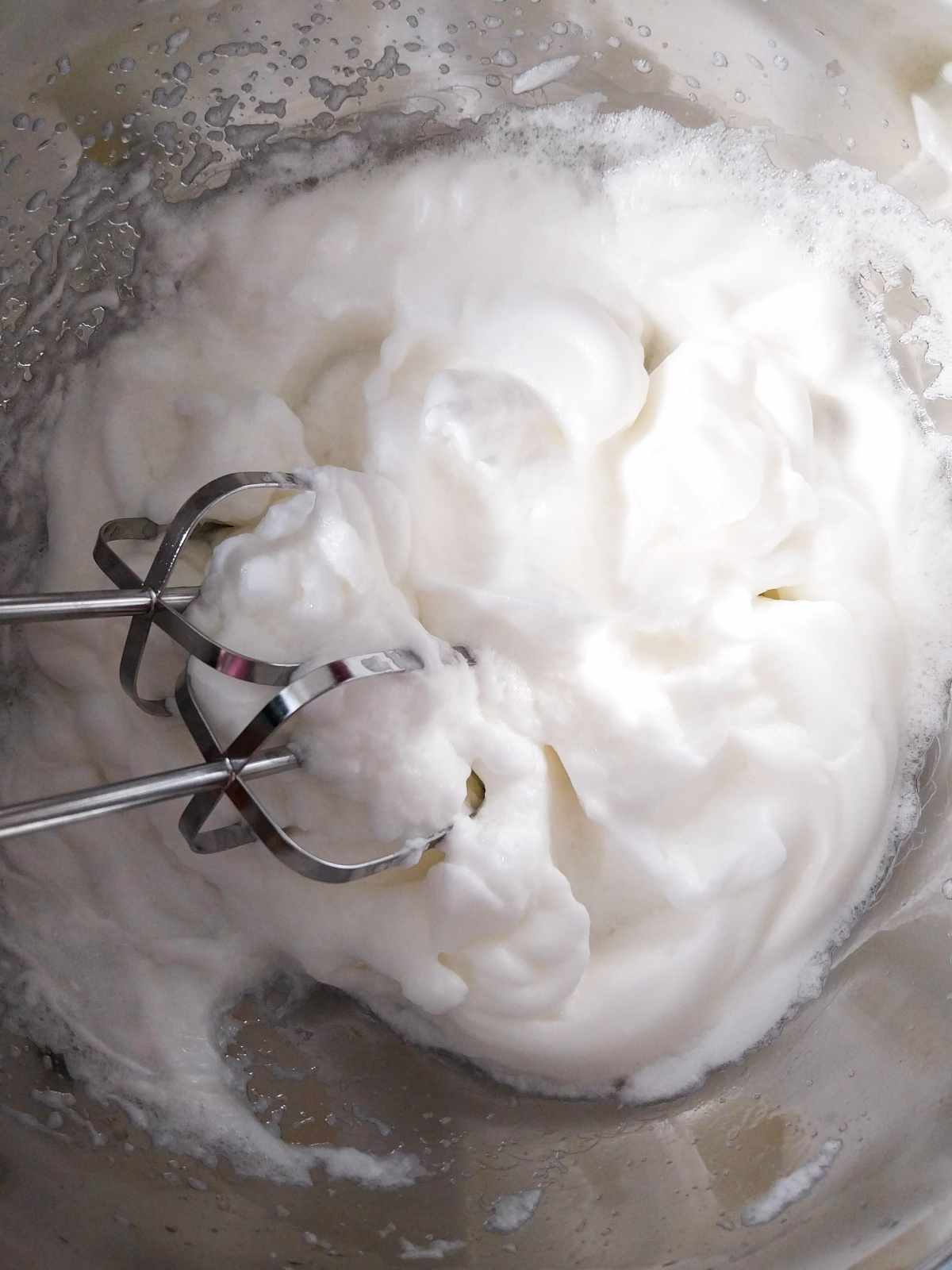
You will need an electric mixer for the next step. Beat the egg whites at high speed of your electric mixer until they form stiff peaks. It will take a couple of minutes.
Step 4
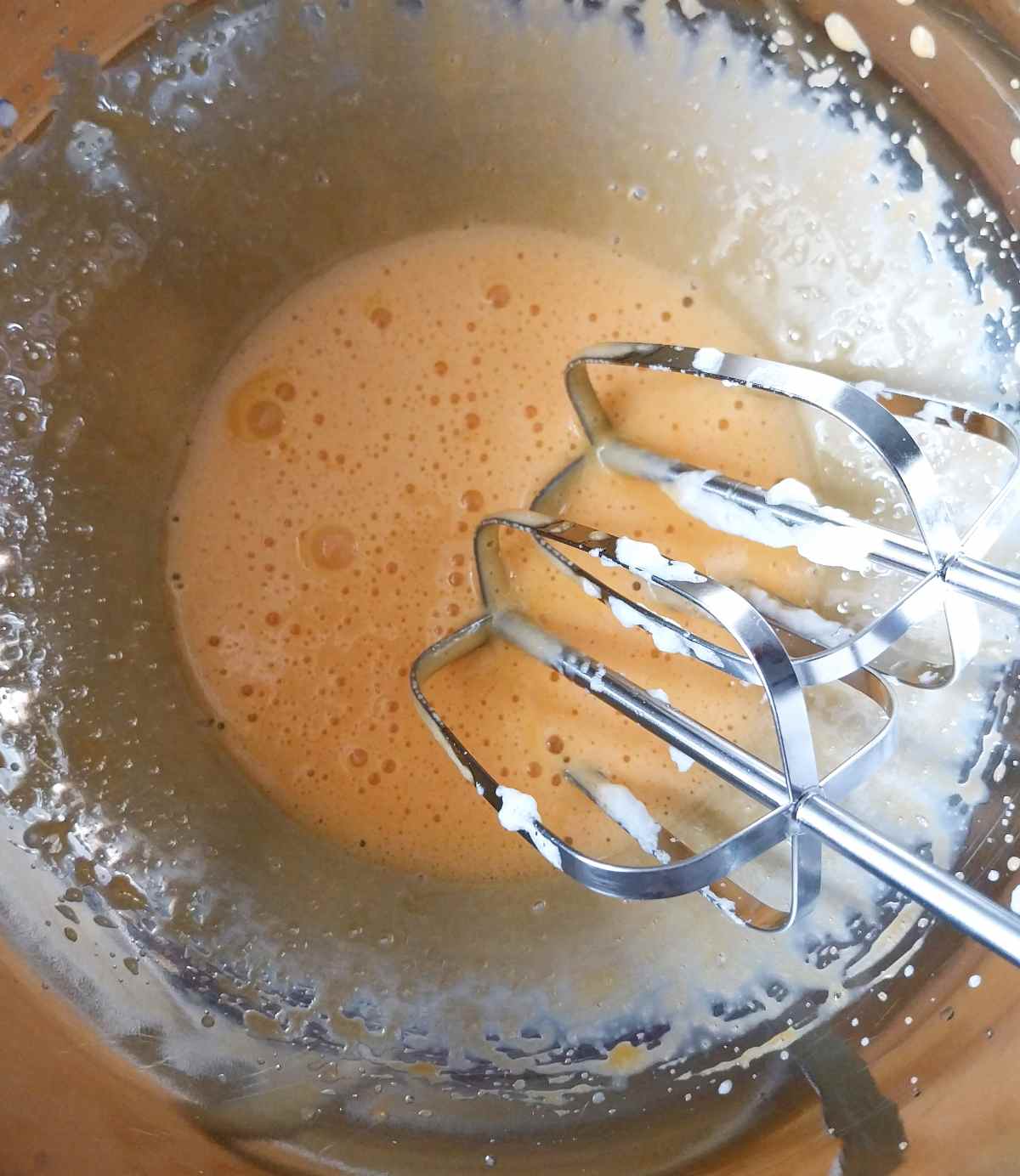
Then, beat the egg yolks until they look pale yellow. This should take a minute or so at high speed.
Step 5

Once egg yolks are ready, add psyllium gel to the mixing bowl with the yolks and mix with the electric mixer until evenly incorporated.
Step 6
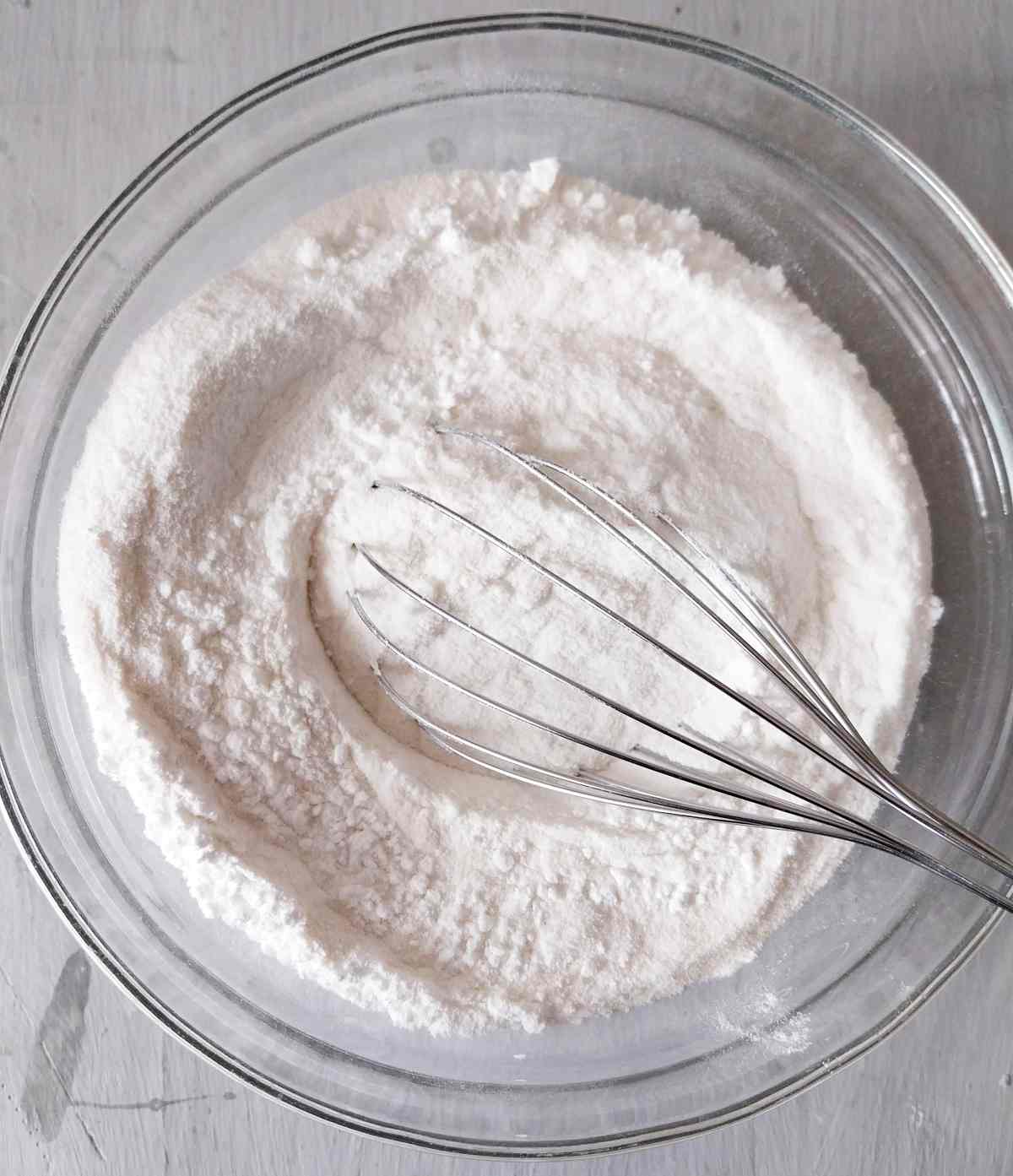
In a separate bowl combine all the dry ingredients and mix to incorporate.
Step 7

Add the dry ingredients to the egg yolk with psyllium. Beat until you see crumbly dough form.
Step 8

Add the egg whites to the rest of the ingredients and mix until it looks like a thick cake batter. Don't overmix!
Step 9
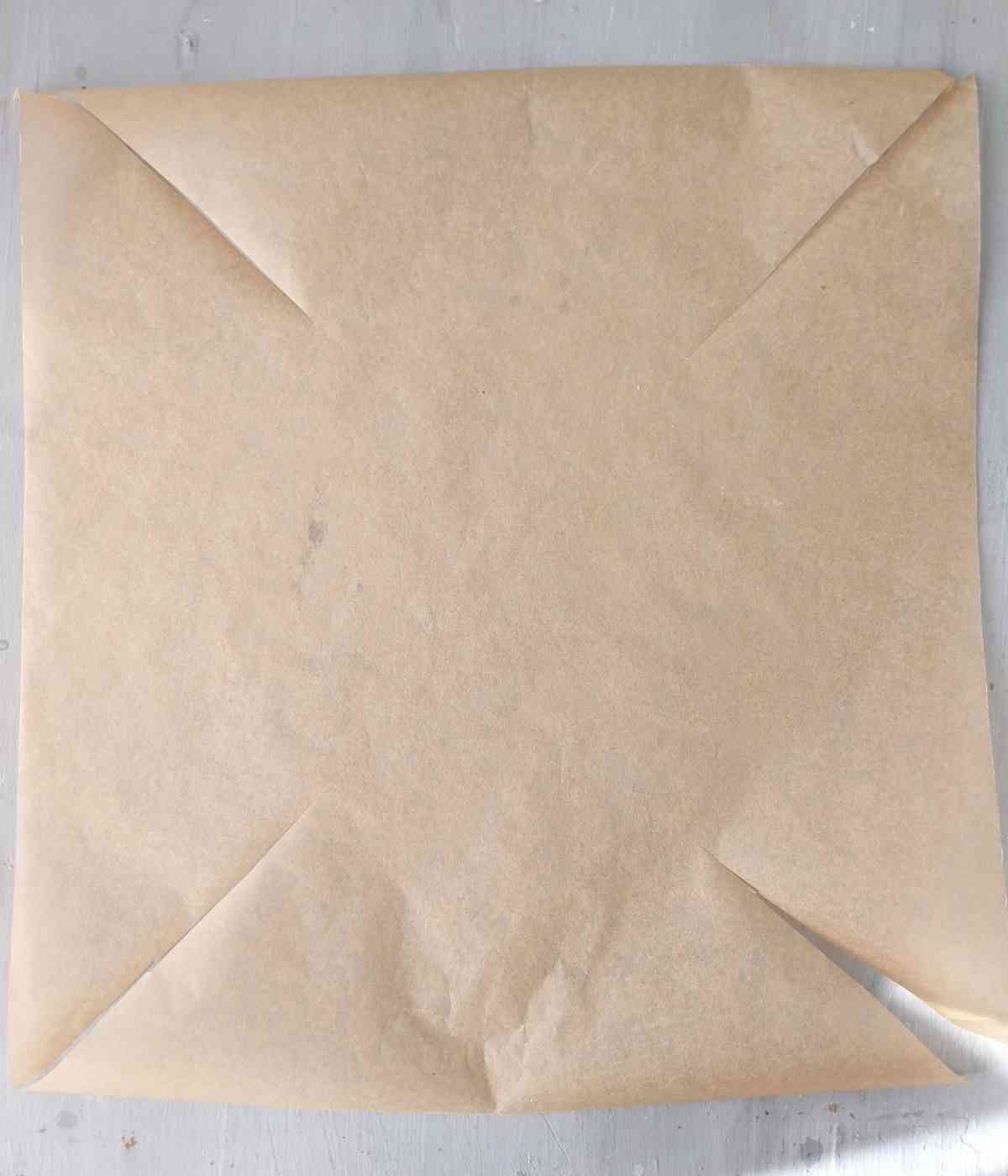
Now, line your baking loaf pan with parchment paper. You can do it however you prefer, but I find that if you make cuts from the corners of the parchment toward the center (about halfway), it makes it easier to line a bread pan with minimal wrinkles.
Step 10

I recommend using a smaller loaf pan (8x4"/20x10cm) to get a taller loaf but if you only have the standard 9x5"/22x12cm, you can use that as well.
I like using clothespins to hold the paper in place while I pour the bread dough into the loaf pan. Make sure to remove them before placing the pan into the oven!
Step 11
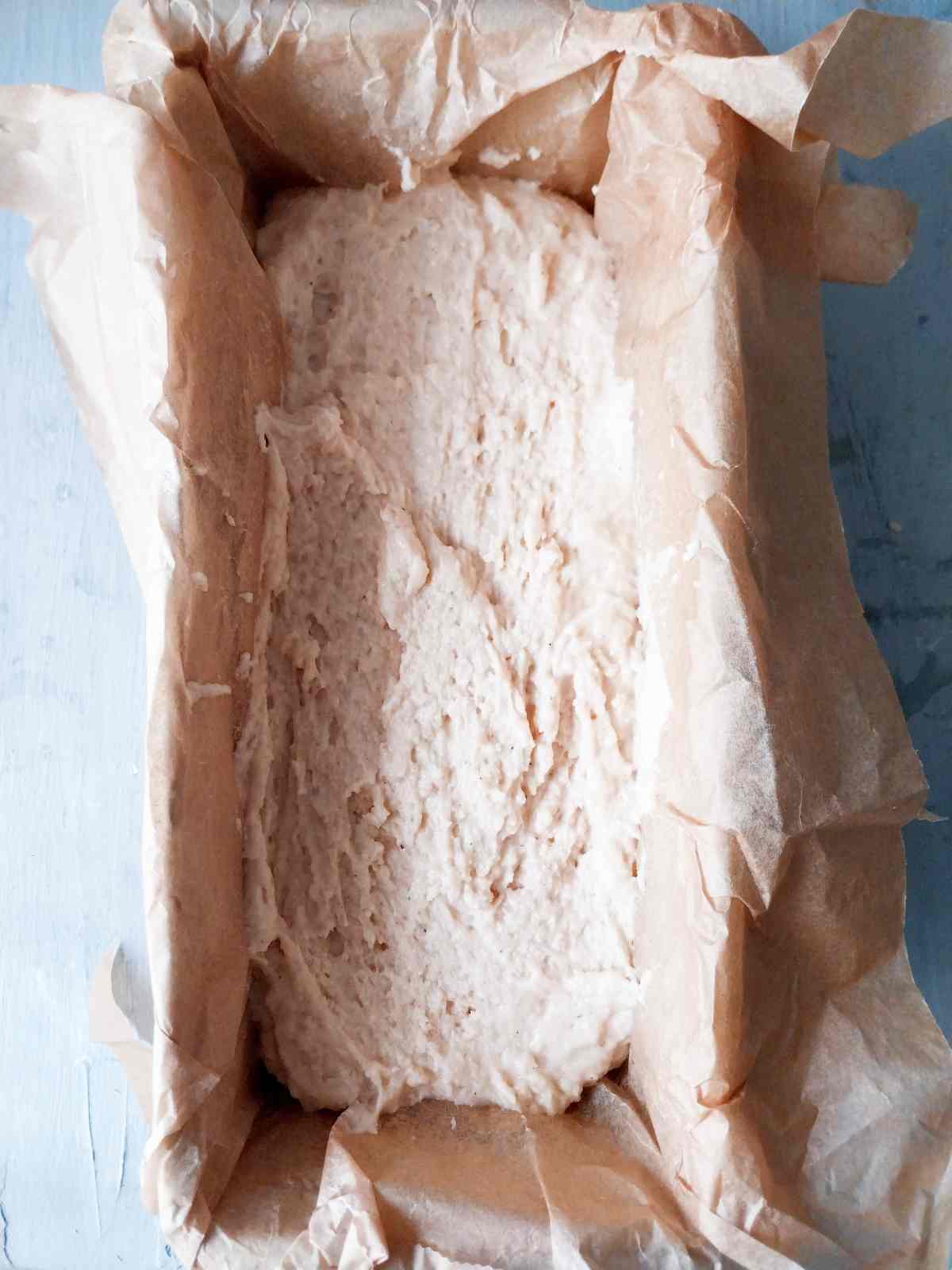
Smooth the batter using a silicone or an off-set spatula and bake the bread for 1 hour at 350F/175C. Take the bread out of the pan, remove the parchment paper, and transfer the loaf onto a wire rack.
Let the bread cool completely before cutting into it! Enjoy!
Pro tip: weigh your flour with a digital scale if possible, otherwise make sure to use a spoon & level method instead of packing the rice flour into the measuring cups.
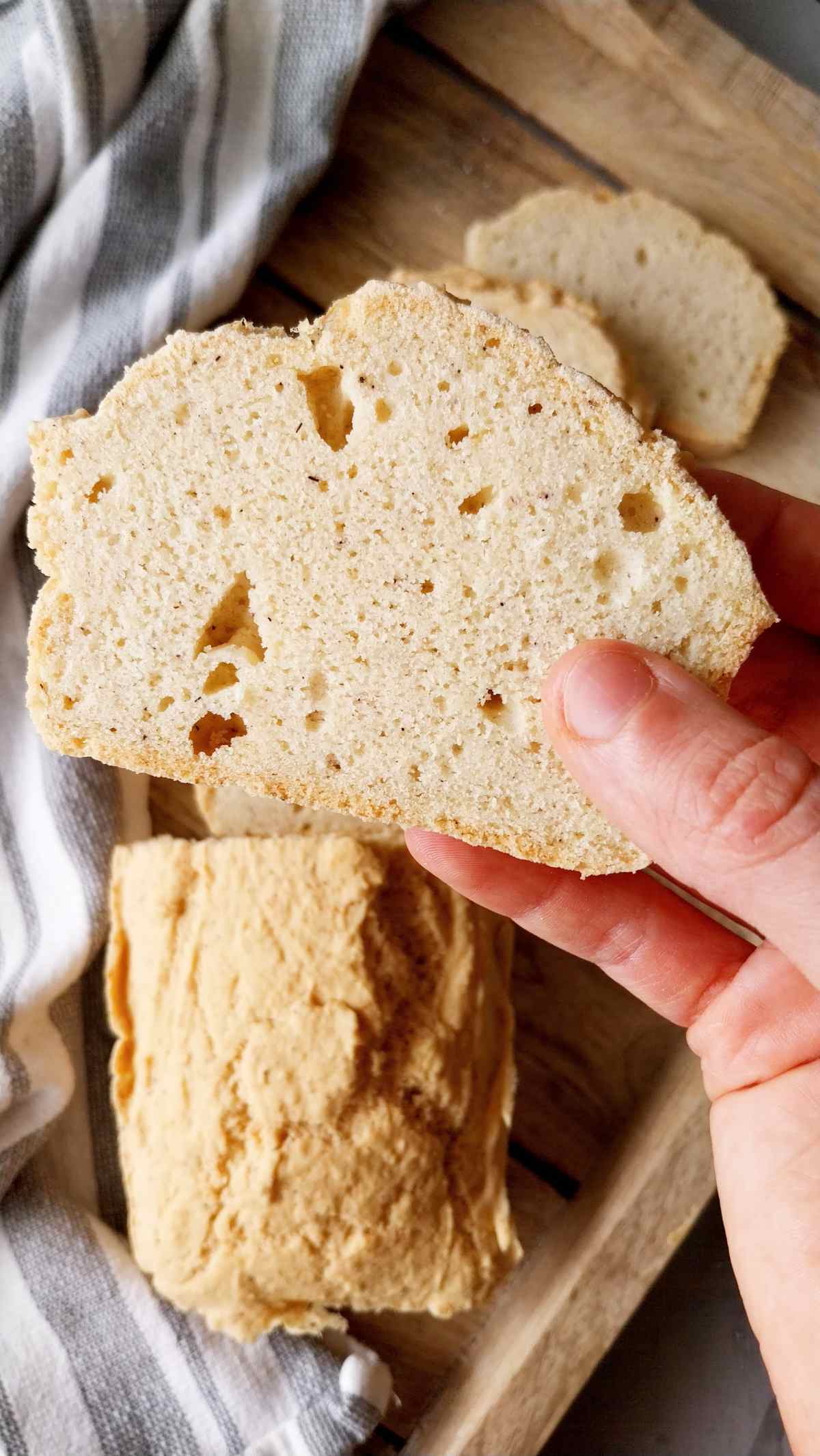
Storage
I recommend either eating this bread fresh (the day of baking) or freezing it. Don't get me wrong, this is not the kind of bread that will crumble the next day, but I find that the texture does change 1-2 days after baking.
However, you can keep this bread at room temperature for 3-4 days in a bread bow or an air-tight container.
I don't recommend putting this rice bread in the fridge because it affects the texture.
To freeze:
- Arrange rice bread slices on a tray and place in the freezer for 30-60 minutes.
- Transfer the slices into a freeze bag or an air-tight container and keep for up to 3 months.
To reheat:
- Pop the slices in a toaster or microwave for 30 seconds or until no longer cold to the touch!
💭Expert tips
- Remove the bread from the loaf pan immediately after taking it out from the oven to prevent a soggy bottom. Cool the bread on a wire rack to ensure airflow on all sides.
- Freeze the bread to keep it fresh.
- Make sure to keep the egg whites clean. If any fat gets into it, it won't whip into stiff peaks! Use a clean bowl and whip the whites first, then go onto the yolks.
Serving suggestions
You make regular BLT sandwiches or go the extra mile and make an avocado grilled cheese sandwich to serve next to fresh roasted tomato soup.
You can serve it with almond butter or peanut butter and jelly, or slather it with butter and some delicious elderberry jam!
Finally, serve this bread as a side to soups and stews. I especially like this rice flour bread next to a bowl of hearty Ukrainian beet soup!
If the bread dries out and becomes hard, you can either grind it into bread crumbs and make breaded pork chops or use it for French toast or croutons.
👩🏻🍳What does this bread taste like?
No grittiness here! In spite of being made of 100% white rice flour, this bread is spongy, airy, and soft. It does remind me of sponge cake a little bit but that is because we are using eggs to create structure and air pockets.
The flavor is neutral, so this bread will be great for both sweet and savory sandwiches. This is a good alternative to the regular wheat white bread.
If you don't like the sponginess, then try making gluten-free bread with a mix of flour and starches like this no-knead rustic loaf. There you will get a true bread flavor & texture!
Variations
You can add flavor to this bread by tweaking a few things:
- Add mixed seeds like sunflower, pumpkin, sesame, or flaxseed.
- Incorporate sundried tomatoes or olives into the dough.
- Make it sweet by reducing salt, and adding more sugar, cinnamon, and dried fruit.
- Season the dough with basil, rosemary, dill, thyme, or Italian seasoning.
Frequently Asked Questions
If eaten fresh, this bread is not gritty but it does get drier after a couple of days. This is why I recommend slicing and freezing rice flour bread instead of keeping it at room temperature.
I wouldn't say this bread tastes eggy, it rather has a flavor similar to A sponge cake. Since we are only using one type of gluten-free flour, the flavor is not the same as with regular white bread.
More like this
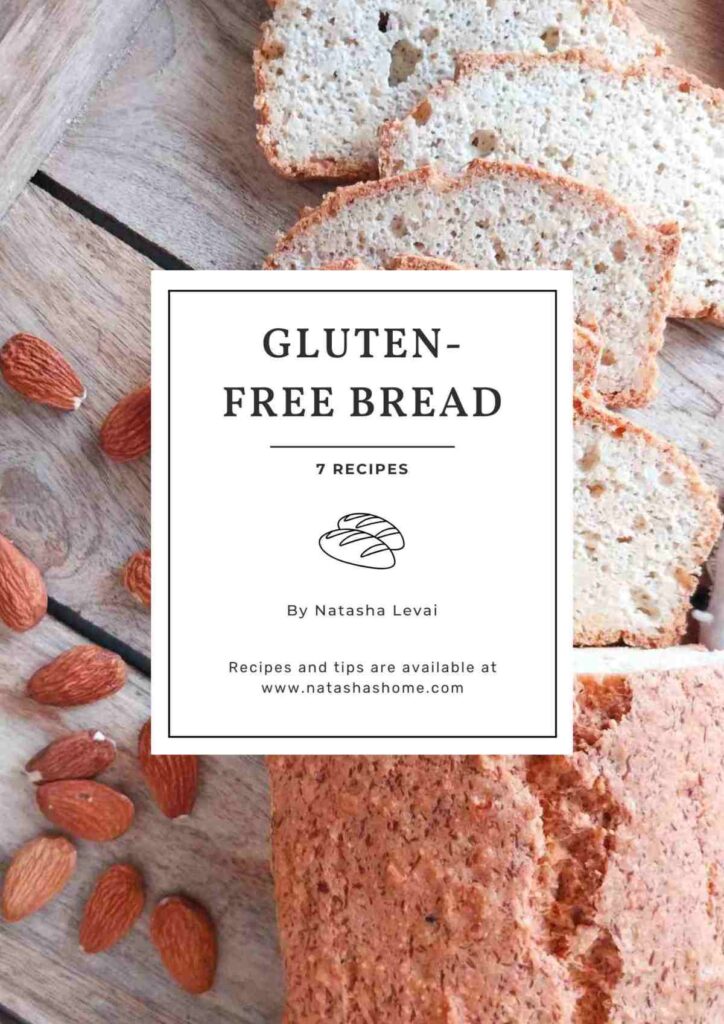
Get my new
Gluten-Free Bread Recipes eBook
The top 7 recipes of 2024!
📖 Recipe
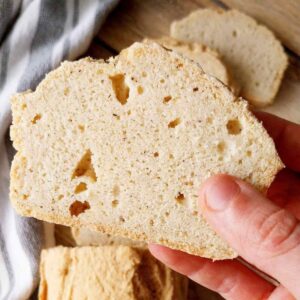
Gluten-Free 100% Rice Bread (No Gum)
Equipment
- 1 electric mixer
- 1 bread pan
Ingredients
- 200 grams (¾ cup) water
- 10 grams (1½ tbsp) whole psyllium husk I don't recommend using powder
- 4 large eggs
- 330 grams (2 cups) white rice flour
- 2½ teaspoon baking powder
- 6 grams (1 tsp) salt adjust to taste
Instructions
- Start preheating the oven to 350F/175C (don't use the fan setting).
- Add psyllium husk and water to a medium-sized bowl and whisk vigorously to prevent lumps. Set aside.
- Separate the egg yolks and whites. You can simply use your hands and let the egg whites slip through your fingers into the bowl. Place the yolks in a separate bowl. Make sure that none of the yolks get into the whites because fat will prevent egg whites from whipping into stiff peaks. I recommend separating one egg at a time using a separate bowl and adding the whites one by one to the larger bowl because you never know when a yolk will break and contaminate the egg whites.
- You will need an electric mixer for this step. Beat the egg whites on high speed until they form stiff peaks. It will take a couple of minutes.
- Then, beat the egg yolks until they look pale yellow. This should take a minute or so at high speed.
- Once egg yolks are ready, add psyllium gel to the mixing bowl with the yolks and mix with the electric mixer until evenly incorporated.
- In a separate bowl combine all the dry ingredients and mix to incorporate.
- Add the dry ingredients to the egg yolk with psyllium. Mix until you see crumbly dough.
- Add the egg whites to the rest of the ingredients and mix until it looks like a thick cake batter. Don't overmix!
- Now, line your baking loaf pan with parchment paper. You can do it however you prefer, but I found that if you make cuts from the corners of the parchment toward the center (about halfway), it makes it easier to line a bread pan with minimal wrinkles.
- I like using clothespins to hold the paper in place while I pour the bread dough into the loaf pan. Make sure to remove them before placing the pan into the oven!
- Smooth the batter using a silicone or an off-set spatula and bake the bread for 1 hour at 350F/175C. Take the bread out of the pan, remove the parchment paper, and transfer the loaf onto a wire rack. Let the bread cook completely before cutting into it! Enjoy!

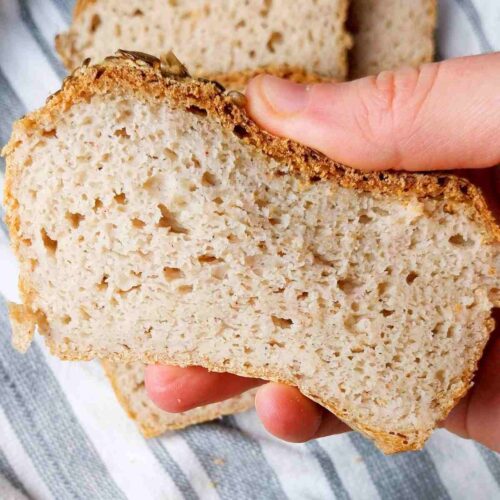
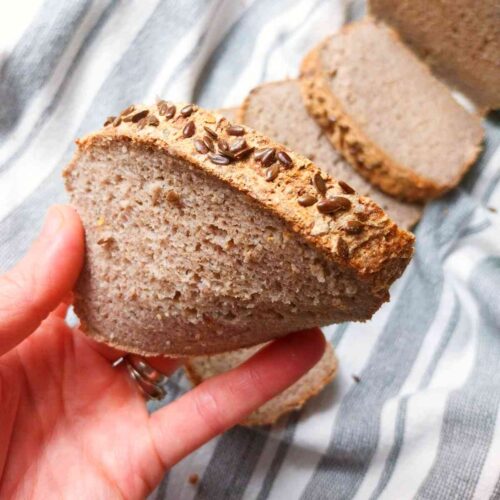
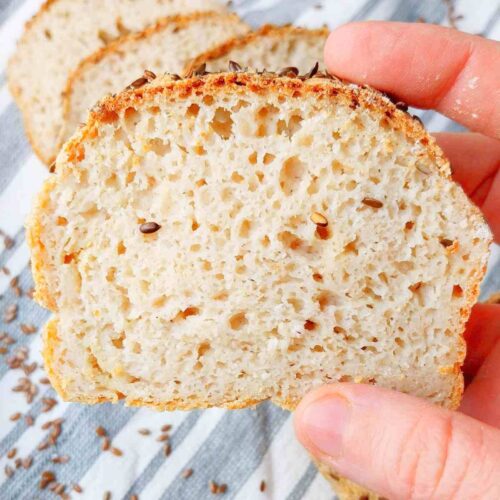
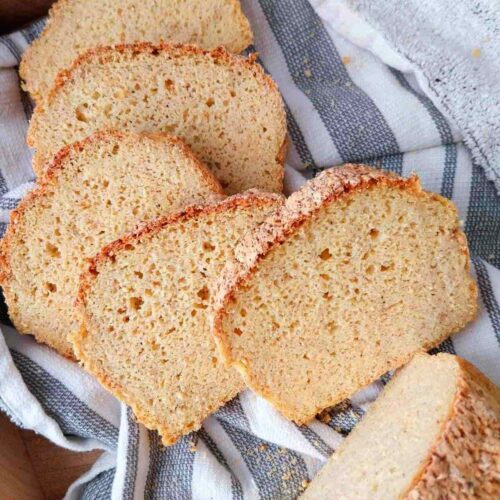
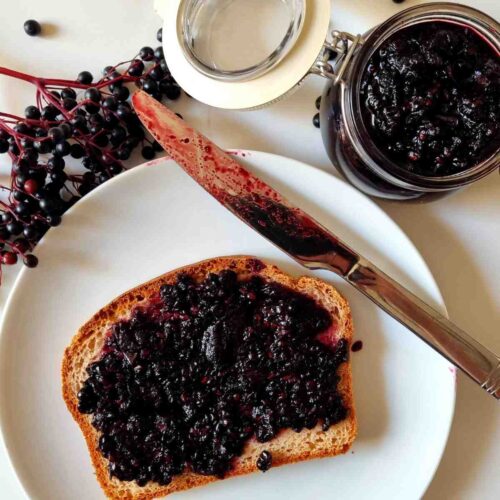

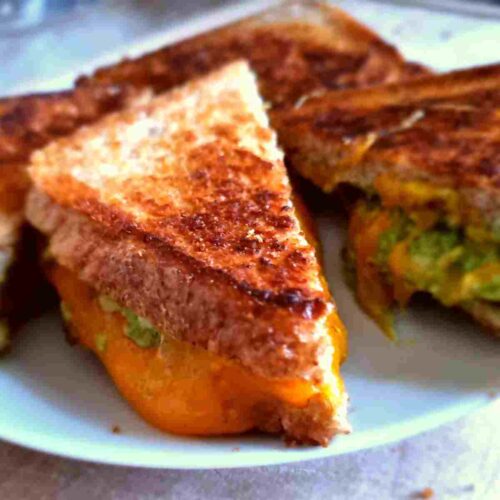
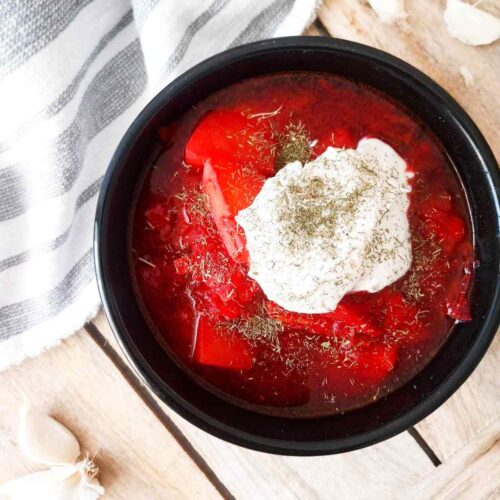
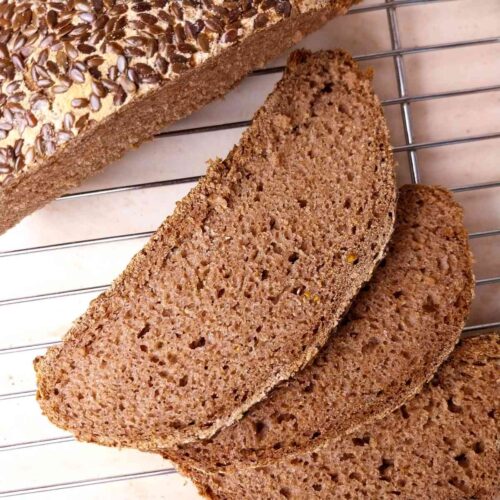
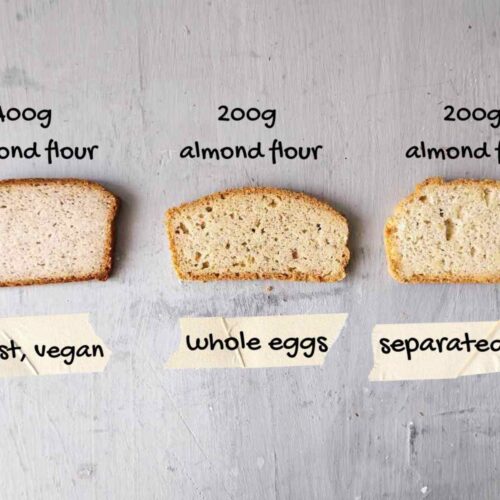
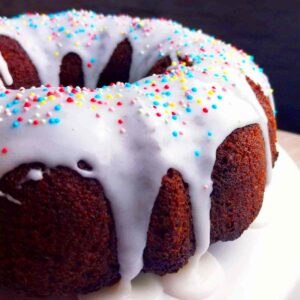
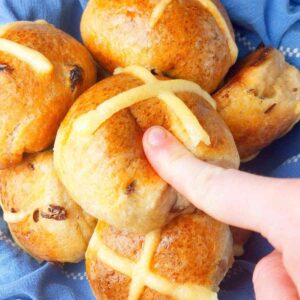
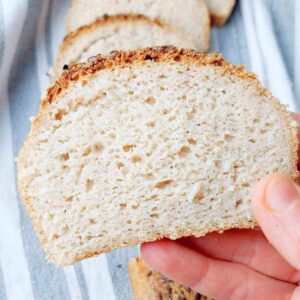
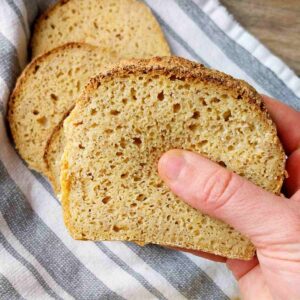
Comments
No Comments